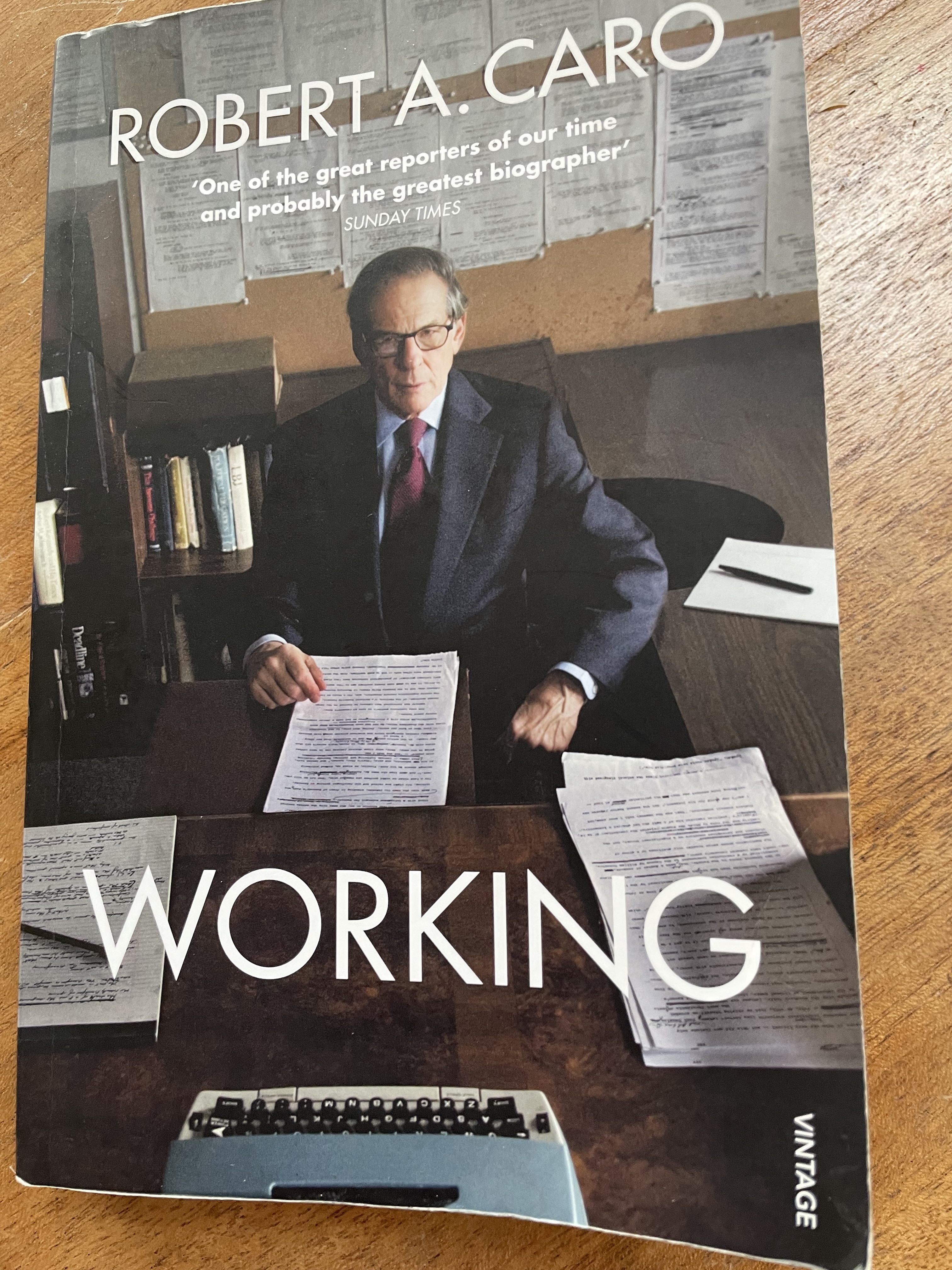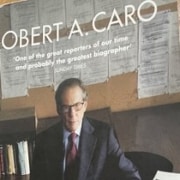Robert Caro: 20th Century Journalism and How to Tell a Story
All my serious reading is organised by my son, who is way more intellectual than me. I am currently enjoying Working by Robert A. Caro and have found lessons and examples that can inform our very different work in a very different century.

Caro was a journalist in the late fifties and sixties working mostly in regional media but with a six year spell as an investigative journalist on Newsday (Long Island and New York). However, he is best known for his exhaustive biographies of two men: Robert Moses, an American urban planner who shaped New York and Lyndon B Johnson. These have won him many awards and considerable fame in political circles. (My son is reading the LBJ biographies, but he rightly judged these are likely too weighty for me.) The awards include winning the Pulitzer Price for Biography twice. Caro is now 87 and is still working on the fifth and final volume of the LBJ biography. The existing four volumes took him 40 years.
There is much to say about Caro’s short book about his work, and the insight it gives into investigative journalism before the internet. Working describes the hours, days, the years, of going through the papers generated by these two men and the people they worked or butted heads with. Endless writing and rewriting: starting a manuscript longhand, and then typing it on a typewriter. This is not the sort of journalism I was ever involved with, and may no longer exist. And while Caro learnt his craft in a newsroom, he is really a writer and a biographer rather than being a journalist in the modern sense of the word.
Working tells the story of one man’s obsession with getting to the bottom of things and understanding how political power really works in a democracy. It is also about the thought process behind incisive, factual but beautiful writing.
I am going to pull out just one example from this little book that made me want to sing and laugh out loud.
Daily I harangue corporate spokespeople to use stories and examples. To illustrate their ideas with human experience, not just conceptual language. Built into my Message House formula, as all my students will know, is space for the story or anecdote or example. I want to force speakers to find the story that will make it all real. I all too often fail. I worry that I do not really communicate the power of this element of messaging. And then in this little book from a writer dealing with a former age, I find the perfect example. Storytelling that burns an idea into your subconscious.
Caro heard from a former colleague of LBJ that when first in Washington, the future president walked to work from his rather shabby digs to the House Office Building on the other side of Capitol Hill. But he always arrived breathless and could often be seen running the last stretch. A young, driven, hugely determined man who was newly in Washington after growing up in rural poverty in the Hill Country of Texas, he still got up with the sun. Apparently every morning, he would start running at a certain point on the journey to work, and sprint towards the office. Researching these early years, Caro many times retraced the steps of that walk. He wanted to know why the young Johnson broke into a run. Finally, he decided to do that walk at 5.30am as Johnson would have done. And suddenly, he understood.
“Veering along a path to the left he (LBJ) would come up Capitol Hill and around the corner of the Capitol, and the marble of the eastern façade, already caught by the early morning sun would be a gleaming brilliant almost dazzling white. A new line of columns – towering columns, marble for magnificent and Corinthian for grace, stretch ahead of him…. And columns loomed not just before him but above him – columns atop columns ….and the huge dome that rose above the capital was circled by columns.”
And he would run.
“Well of course he was running”, writes Caro in Working: “from the land of dog-run cabins to this. Everything he had ever wanted, everything he had ever hoped for was there. And that gigantic stage lit up by the brilliant sun, that façade of the Capitol – that place – showed him that. Showed him that, and if I could write it right, (I) would show the reader as well.”
It took Caro weeks if not months to get that story, to find the right imagery. But once he got it, he wrote it and brought to life the raw determination of LBJ to move away from poverty and towards power and majesty. How the morning light on the marble columns made him sprint towards his future.
Since I have read those words, I have pictured that run again and again. I even dreamt about it. I have never seen the Capitol building except on TV. But the power of that story, the image of the sun on the marble, the desperation to escape poverty, is likely to be the most insightful thing I will ever know about LBJ.
Understanding the power of a story, one that you can picture, is essential to influence. I have been at his game over 20 years now and I hope that there are today people out there who say, “I had a great media/presentation trainer, she taught me to tell stories”.
Other blogs I have written on the power of stories.
The Most Powerful Element of any Message
Capitol Building Images: Credit Louis Velazquez
Unsplash
- Media Savvy Operators Know How to Place a Quote - May 21, 2024
- The Magic of Performance - May 14, 2024
- Our Top Tips: - May 8, 2024





Leave a Reply
Want to join the discussion?Feel free to contribute!